Gooseberries are a close relative of currants. It was first cultivated in Rus' in the 12th century; later it spread to Europe, Asia and other continents. Distributed everywhere. It is very unpretentious, easy to care for and is grown throughout the country.
|
Although this crop is unpretentious, to get a decent harvest you need to know how to properly plant and care for gooseberries in open ground. |
Biological features
Gooseberry is a long-living thorny shrub, up to 1.5 m high. Released varieties have excellent winter hardiness (the ability to withstand winter thaws without damage) and frost resistance (the ability to tolerate frost). In the Central region, modern released varieties are able to tolerate frosts down to -30°C. Although in winters with little snow, gooseberry roots freeze out at -8-12°C.
The culture also tolerates severe frosts well: the flowers are not afraid of temperatures down to -3°C. buds - -6°C, ovaries - -2°. The shrub tolerates long-term cold weather well in late spring and early summer, but prolonged severe frosts (below -5°C) can destroy the crop.
The root system goes shallow, mainly located at a depth of 1-1.2 m, but individual roots can reach a depth of 1.5 m. The roots do not spread far, the bulk is located directly under the plant.
The above-ground part consists of shoots on which there are very sharp spines 5-10 mm long; they can be single, double or triple. Currently, thornless varieties have been developed. Every year, zero basal shoots appear at the base of the bush, which later turn into perennial branches.The gooseberry bush has branches pointing upward. As a rule, they are located in the center and are very elongated. Their productivity is low, the berries are set only on the tops.
|
The shoots around the circumference of the bush deviate outward and are very productive; berries are set along the entire length of the fruiting branch. |
The branches live 7-8 years, producing full harvests. When a branch begins to age, the number of ovaries on it decreases, it is cut out and replaced with a new shoot.
Gooseberries are heat-, moisture- and light-loving, although they can grow and bear fruit in partial shade. To extend the life of plants, anti-aging pruning is carried out. With proper care, the crop bears fruit without a decrease in yield for 25-40 years (depending on the variety).
Gooseberries begin to bear fruit at 2-3 years, but begin to produce full harvests from 5-6 years of age.
The crop begins its growing season very early, as soon as daytime temperatures are at least 7-8°C. It blooms in the middle zone in mid-late May, in the south - at the end of April. The berries are round or oblong, pubescent or smooth, with a waxy coating in some varieties. The color of ripe berries depends on the variety: green, yellow, red, black. The berries ripen evenly and contain a large number of seeds. From one adult bush that has entered the period of full fruiting, you can collect up to 25 kg of berries.
Gooseberry varieties
Conventionally, varieties are divided into 3 groups:
- American;
- European;
- hybrid.
American varieties less prickly. The spikes are located at a considerable distance from each other. They are quite resistant to powdery mildew, the main disease of gooseberries.
|
American varieties are very winter-hardy and drought-resistant. The berries are small and medium-sized and contain a lot of acid. |
Don't forget to read:
The best varieties of gooseberries with photos and reviews from gardeners ⇒
European varieties very prickly and have virtually no resistance to powdery mildew. Because of this disease in Europe at the beginning of the 20th century, a significant part of the plantings died.
|
European varieties are slightly winter-hardy. The berries are large, up to 20 g in some varieties, sweet and tasty. |
Hybrid varieties appeared as a result of selection. The main direction of selection is to obtain low-thorn or completely thornless varieties, resistant to powdery mildew, winter-hardy, large-fruited, with berries of excellent taste.
Most gooseberry varieties are self-fertile, but growing several varieties together leads to increased yields.
Timing for planting gooseberries in the ground
Gooseberries can be planted both in spring and autumn. Autumn planting is preferable, since the shrub does not waste energy on vegetation, but builds up the root system.
Gooseberries are planted in open ground in September-October, but no later than 2 weeks before the onset of cold weather.
|
Like all shrubs, gooseberries are best planted in early autumn. |
In the spring they plant very early, before the buds awaken, then the crop will have time to more or less take root. This period is very short; gooseberries begin the growing season first. If time is wasted and buds begin to bloom on the seedling, the above-ground part will develop very actively, and undeveloped roots will not be able to meet the needs of the tops. Therefore, for the first 2 years such a bush will lag behind in growth.
There is also a general rule: gooseberries with an open root system are planted only in the fall; those with a closed root system can be planted in the spring, including when the growing season has already begun.
Landing place
Gooseberries are planted in bright areas, protected from cold winds.The crop is not planted in open areas, because in winter the wind blows the snow and the snow cover is too thin; the bush may freeze. It tolerates light partial shade quite well, but does not bear fruit in deep shade.
|
The place for growing gooseberries should be impenetrable so that thorny branches do not cause trouble. |
Slightly acidic fertile soils with a groundwater depth of at least 1.5 m are suitable for planting gooseberries. However, it grows without problems in acidic soils (pH 4.5). Places where melt and rain water stagnate are not suitable for it. Gooseberries grow poorly on sandy (due to lack of moisture) and heavy clay soils.
Soil preparation
The soil is usually prepared in the spring.
- Digging is carried out using a shovel, organic matter (manure, humus) is added into a bucket at a depth of 1.5-2 m.2.
- On sandy soils, apply manure (2 buckets/m2) and clay.
- On heavy, cold clay soils, add sand up to 3 buckets per m2 and manure 2-3 buckets per m2.
- On strongly acidic soils (pH less than 4.5), lime or, better yet, ash is added in the spring, and manure is added in the fall or directly into the planting hole.
The size of the planting pit is 50x50 on light soils and 70x70 on heavy soils. Add 0.5 buckets of manure and 3 tablespoons of superphosphate directly into the pit. and potassium sulfate 1 tbsp. Everything is thoroughly mixed with the soil. This fertilizer should be enough for 2-3 years. Phosphorus-potassium fertilizers can be replaced with 0.5 cup of ash.
|
When preparing the planting hole, carefully select all the roots, otherwise they will inhibit the young seedlings. Very dangerous weeds are gooseberry and wheatgrass. They can practically deprive a small seedling of nutrition, and they also oppress adult plants. |
When planting in spring, in addition to all of the above, add 1 tbsp nitroammophoska.If all fertilizers were applied in the fall for continuous digging, then in the spring only nitrogen fertilizers are applied to the planting hole.
Selection of seedlings and preparing them for planting
A well-developed seedling should be from 30 cm in height (for low-growing varieties), to 50 cm (for tall varieties), and have 3-4 shoots. It is better to take seedlings with unopened buds, they take root more easily. The shoots should be free of damage, diseases and traces of pests. They should have a light gray color, which indicates the youth of the shoot. Bushes with an open root system must have well-developed roots at least 20 cm long. It is optimal if the length of the roots is equal to the length of the shoots.
|
The photo shows gooseberry seedlings before planting. |
Before planting, seedlings with an open root system are soaked for a day in a weak solution of potassium permanganate; you can also add a root growth stimulator: Kornevin, Kornerost. Seedlings with a closed root system are watered abundantly the day before planting.
Planting gooseberries
When planting, the bushes are placed at a distance of 1.5 m from each other. When grown in several rows, the row spacing is 1.5-2 m. If the area of the plot allows, then it is better to plant gooseberries 2x2 m, then the feeding area under the bushes is fully used. Gooseberries are planted as biennial seedlings or well-developed biennial cuttings.
Autumn planting
Before planting, the hole is watered. Plants with an open root system are planted obliquely. The seedling is placed in a hole, the roots are straightened, tilted to the side and covered. The root collar is buried by sprinkling the 2-4 lower buds with soil. Gooseberries produce adventitious roots well, and new roots will form on the stems covered with soil, and young shoots will emerge from the buds.With such planting, the crop develops a powerful root system located at a depth of 30-60 cm. Immediately after planting, the crop is watered.
|
When vertically planting seedlings with an open root system, they develop much worse, even when the root collar is deepened. |
If the bushes are very small, then 2 seedlings are planted in one planting hole, tilting them in different directions. As a result, one powerful bush is formed.
The root system of a seedling usually partially dies after planting, and if the adventitious roots develop poorly, the seedling may die. Or in the next 2-3 years the plant will be severely stunted and produce minimal yields.
According to my many years of observations, small seedlings should not be pruned for the winter. At this time, the shoots no longer grow, but only the bush takes root. Covered with snow, it winters well. In the spring, if there are no young shoots, the shoots can be shortened by 3-5 buds. If the variety is not too winter-hardy, then it is completely mulched with peat chips, hay or sawdust. As soon as the snow melts, the mulch is removed, otherwise adventitious roots will form on the shoots.
Watch the video on how to properly plant gooseberries in the fall:
Spring planting
In the spring, gooseberries with a closed root system are planted. Planting is also carried out with an inclination, 3-4 lower buds are sprinkled. Immediately after this, the bush is trimmed, leaving 3-4 buds above the ground. In spring, gooseberries grow rapidly, and the above-ground part develops at the expense of the underground, inhibiting the formation of a normal root system. Poorly developed roots cannot meet the needs of the shoots; as a result, by the end of the growing season, growth is severely inhibited, the roots do not develop and the young seedling may die by the end of the growing season or not survive the winter.Pruning gooseberries immediately after planting eliminates these problems.
|
After planting, the gooseberries are watered generously |
Gooseberries with an open root system are usually not planted in the spring, but if there is nowhere to go, then immediately after planting all shoots are cut off, leaving 1-2 buds on the surface. By the middle of the growing season, it will have new young shoots.
Immediately after planting, the gooseberries are watered. If the weather is dry, then watering is repeated after 4-5 days. After watering, mulch the soil to prevent the formation of a soil crust.
Gooseberry care
Caring for gooseberries is easy. But young bushes need to be looked after more carefully so that by the time they enter full fruiting they are strong and can produce full harvests.
Feeding gooseberries
If all fertilizers are applied during planting, the crop does not need fertilizing in the first 3-4 years. The exception is nitrogen fertilizers. Nitrogen is quickly washed into the lower layers of the soil and becomes unavailable to plants. Nitrogen fertilizing is carried out starting from the 2nd year. The best fertilizer for the crop is ammonium nitrate. It is applied 2 times during the growing season: in the spring, when buds open, 1 des.l./10 l of water and at the end of June, with intensive growth of shoots, 1 des.l./10 l. Young plants are given half the feeding rate.
Starting from 4-5 years, the entire range of necessary fertilizers is applied annually.
- In the fall, once every 2-3 years, decomposed manure or compost is dug in around the perimeter of the bushes: up to 6 kg for tall, spreading bushes and 3-4 kg for low-growing bushes.
- If manure has not been applied since the fall, then in the spring the crop is watered with an infusion of manure diluted 1:10 or bird droppings 1:20.
- If the soil is very poor, then after picking the berries, fertilize with ammonium nitrate (1 tbsp/10 l of water).It enhances the formation of fruit and growth buds.
|
On chernozems, summer fertilizing with nitrogen is not done; here it is enough to add manure for digging. |
In the absence of manure, nitrogen fertilizers are applied three times:
- early spring when buds open 2 tbsp. ammonium nitrate/10 liters of water;
- when pouring berries 1 tbsp/10 l;
- after harvesting 1 tbsp/10 liters of water.
It is better to apply mineral fertilizers in the spring, since when applied in the autumn they are washed out and become inaccessible to gooseberries.
An excellent feed for it is ash: 2 cups of infusion per 10 liters of water. It can be applied in dry form during spring loosening of the soil: 3 cups for tall bushes, 1.5 for low-growing ones.
On alkaline soils, ash is not used because it increases alkalinity. Here we use 3 tbsp potassium sulfate and 2 tbsp superphosphate per 10 liters of water.
Sometimes signs of excess nitrogen appear on gooseberries: young growth is thin, long, the leaves on it are light and over time the color does not become more saturated. Stop all nitrogen fertilizing and do not apply manure in the fall.
Video about caring for gooseberries:
Tillage
The soil is cultivated throughout the season. In spring, gooseberries are dug around the perimeter, removing all weeds. Inside the crown, the soil is loosened to a depth of 4-5 cm, removing weeds.
Throughout the growing season, regular weeding of tree trunk circles is carried out. Loosen after each watering or rain, preventing the formation of a crust. You can mulch the ground with hay, peat, sawdust.
|
Gooseberries should not be allowed to become overgrown with weeds. This is especially true for young plants. |
In the spring, if manure is not applied, the soil is loosened or dug to a depth of 5-7 cm.Deeper loosening is undesirable, since some of the roots are close to the surface.
The soil under gooseberries should always be clean. The formation of turf under it is not allowed.
To cultivate the soil, gooseberries are tied with wire, and its long ends are twisted. After processing, unwind at the same ends. This method of tying the bush protects your hands from wounds.
How often to water gooseberries
Gooseberries are a drought-resistant crop, but with a prolonged lack of moisture they begin to drop their berries. In addition, without watering, fruit buds develop worse, which leads to a decrease in yield in the next 2 years.
When growing gooseberries in the middle zone with moderate precipitation, the crop does not need watering. In the absence of rain or during short summer showers, the gooseberries are watered once every 20 days. The watering rate for young bushes is 10 liters, for adults - 30-50 liters. Seedlings are watered every 2 weeks.
|
In the southern regions, watering is carried out once every 14 days. |
Gooseberries are sensitive to lack of moisture during the berry-filling period. At this time, in the absence of precipitation, it is watered once every 10 days.
Preparing gooseberries for winter
In late autumn, water-recharging irrigation is carried out, spending 0.5 buckets of water on young seedlings, 1-2 buckets on low-growing bushes, and 3-4 buckets on tall bushes.
In cold regions - the North, the Urals, Siberia - the branches are bent to the ground and covered with sawdust, hay or peat. In early spring, covering material is removed as early as possible. In the middle zone, only weakly winter-hardy varieties require shelter for the winter. The gooseberry branches are bent to the ground, but not covered with anything.
But most gooseberry varieties do not need shelter for the winter. They winter well without any shelter.
Harvesting
The berries ripen evenly, but if they are overripe, they begin to fall off. When the soil moisture content is high, the berries of some varieties crack. Ripe berries are soft to the touch and have a characteristic color and taste. In most varieties they do not ripen for a long time.
|
Harvesting is done by hand, using gloves to protect hands from damage. |
Gooseberries can be harvested at any stage of ripeness. As soon as the berries begin to acquire the color characteristic of the variety, they can be removed and used for processing (mainly jam and compotes). Unripe berries are sour and should not be consumed fresh. Gooseberries (except for overripe ones) tolerate transportation well; they can be transported over long distances without loss of quality.
Gooseberry pruning
Gooseberry pruning can be sanitary, rejuvenating or formative.
Sanitary pruning
Carry out as necessary, removing all weak, damaged, as well as branches lying on the ground and directed inward. Cut out all old branches.
Every year, gooseberries are thinned out, removing branches that thicken the crown. Bushes with a small number of branches grow freely, the branches do not shade each other. They produce higher yields and age more slowly.
Anti-aging pruning
Sometimes it is carried out for old valuable varieties or neglected plants in which there are many old branches. All gooseberry branches are cut off near the ground in spring. Within a month, new young shoots will emerge from the root.
Do not miss:
Formative pruning
It begins in the year the crop is planted and continues throughout its life. When planting in spring, cut off all the branches, leaving 3-4 buds above the ground.When planting in autumn, gooseberries are not pruned, but if they become very elongated during the growing season, they are shortened by 3-4 buds.
In the fall, weak root shoots are cut out, leaving 3-4 healthy shoots, which are shortened by half. As a result, by the second year the gooseberries will be strong and produce healthy young shoots. If you leave the weak shoots that grew in the first year without pruning, then weak side branches will develop on the weak shoots, the yield on which will be noticeably less. Of course, with proper further care it will increase, but in the first years the bush will bear fruit poorly.
|
It is better to prune gooseberries in the spring, since in winter some branches freeze slightly. They are cut back to live wood. |
2-3 years after planting, cut out all weak shoots, leaving 2-3 of the strongest ones. In this way, a bush is formed, consisting of 6-8 healthy strong branches. There is no need to leave more than 3 shoots annually, because then the gooseberries will be very thick, the internal branches will suffer from a lack of light, and their yield will decrease. In addition, a thickened bush creates favorable conditions for the development of diseases.
Pruning starting from the 6th year of life
Gooseberry branches age more slowly than those of its relative currants. Therefore, we must look not at their age, but at their quality. If there are strong young growths on the old branches, they will bear fruit well and are left. If there is little growth on a branch, and it is weak and poorly branched, then such a branch is cut out, even if it is young.
Branches from 3 to 7 years old are the most valuable. The main crop is being formed on them, so they are not cut out if they are healthy.From the age of 8, they pay attention to the condition of the branch; if there is good growth, they leave it, but, as a rule, by the age of 10, the shoots age and die.
Therefore, pruning an adult gooseberry consists of removing old branches and frail young growth.
Standard and fan cultivation of gooseberries
In addition to the usual bush growing method, gooseberries can be grown on a trunk or on a trellis.
Standard formation of gooseberries
Standard cultivation means that the crop is formed not from a bush, but from a tree. In the fall, the most powerful shoot of a seedling, growing vertically, is selected; the remaining shoots and young shoots are cut off completely, leaving no stumps.
|
Many summer residents grow gooseberries on a trunk just for the sake of exoticism. |
In the spring, the central conductor is shortened by 4 buds, and if it is very small, by 1-2 buds. During the growing season, shoots of the 2nd order and root shoots are formed on it. In the fall, the root shoots are completely cut out, and 3-4 strong branches are left on the central conductor in the upper part. The rest are deleted.
In spring, branches of the 2nd order are shortened by half, but so that the top bud looks up. During the season, these branches become overgrown with shoots of the 3rd order. In autumn, cut out all root shoots. In the spring, choose the 2 strongest shoots of the 3rd order on each branch and shorten them by half. The remaining branches of the 3rd order are cut out.
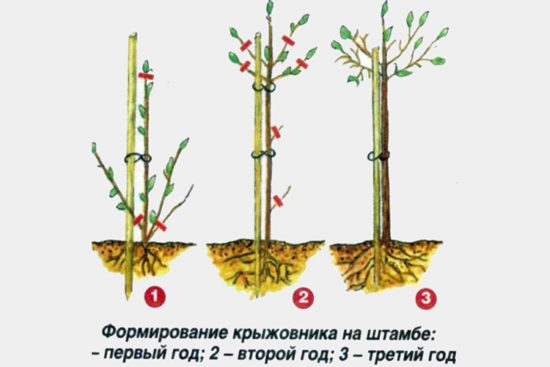 |
This is what they do every year. As a result, each branch of the 2nd order turns into a skeletal branch and is overgrown with branches up to the 5th-6th order.
Standard gooseberries are less durable, living for a maximum of 8-10 years. When the central conductor ages, the gooseberry tree dies. In addition, its yield is lower, and the branches require support when filling berries.
Fan formation
When growing in a fan, the bush is formed on a trellis. As a result, the plant is evenly illuminated, the branches do not shade each other, it is convenient to feed, water and weed, and it is much safer to pick berries.
The topmost branches are tied vertically to the trellis. Side branches - 25-30 cm away from the middle. The lowest branches are tied to the bottom wire.
|
The trellis method of growing gooseberries has many advantages, but there are also disadvantages. |
With this formation, only 2-3 young shoots are left annually, otherwise the gooseberries will be thickened and there will be nowhere to tie the branches. The rest of the pruning is the same as when forming a bush.
In regions with harsh winters, this method is not used, since the branches often freeze.
Gooseberry propagation
There are several methods of reproduction:
- Horizontal layering.
- Vertical layering.
- Arc-shaped layers.
- Dividing the bush.
- Green cuttings.
- Lignified cuttings.
- Seeds.
Reproduction success depends on the variety. Some varieties take root well and quickly, while others take root with great difficulty.
Gooseberry propagation by horizontal layering
The most effective method of propagation, producing a large amount of planting material. For rooting, branches 1-4 years old are used. The strongest layering is produced by 1-2 year old shoots. If you need to get many layerings from a given bush, then in the fall they leave not 3-4 shoots, but more, cutting out only the weakest ones.
|
Scheme of formation of horizontal layers |
In early spring, before the buds open, loosen the soil around the gooseberries at a distance 2 times the size of the crown. All shoots selected for rooting are shortened by 1/4. Pruning stimulates bud germination.The shoots are pinned tightly to the ground and lightly sprinkled with soil, but not more than 0.5 cm.
When the shoots are deeply sprinkled, the buds do not germinate.
Branched branches also have strong lateral growths that are pressed down. The buds germinate in 5-30 days (depending on the variety). When the cuttings grow up, they are loosened shallowly and slightly hilled. Hilling is repeated after 2 weeks, 1-2 lower buds are covered to stimulate the formation of adventitious roots. Then loosening is carried out throughout the growing season with an interval of 10 days. If the weather is dry, then the cuttings are watered regularly.
Dig in the fall. Cut off branches from the bush and dig up on both sides. Then the cuttings are removed from the ground and sorted. Shoots with 2-3 roots are discarded. The rest are planted in a permanent place, or dug in until spring.
|
The method is quite simple, effective and does not require special care. |
To simultaneously obtain planting material and harvest, no more than 3-5 branches are allocated. The yield of healthy layerings is 10-50 pcs. from a bush, depends on the number of allocated shoots.
Video about gooseberry propagation by layering:
Vertical layers
The method is not used by summer residents, since it is incompatible with simultaneous harvesting. To obtain planting material, 3-4 year old plants are used.
 |
In early spring, the bush is completely cut out, leaving stumps of 15-17 cm. After 10-30 days, shoots begin to appear from the dormant root buds and the buds remaining on the stumps. When they grow to 30 cm, and their lower part begins to become lignified, hill up 10-12 cm. After 15-20 days, a second hilling is carried out, covering the branches at 20 cm. By autumn, adventitious roots develop on the sprinkled shoots.In the fall, the soil is carefully raked, the cuttings are separated from the mother plant and planted in a permanent place or for growing.
Arc-shaped layers
It can be used simultaneously with harvesting. This method is suitable when you need to obtain a small number of seedlings. Amateur gardeners often use it. In the spring, 1-2 year old shoots are rooted, but it is also possible to root shoots of the current year.
|
In September, the cuttings are separated from the mother plant, and a month later they are dug up and planted in a permanent place, although they can be left until spring. |
Early in spring, make a hole of 8-10 cm near the bush, bend a branch and pin it to the bottom of the hole. The hole is covered with earth. The end of the branch remains on the surface so that it stands level, it is tied to a peg. They don't cut it. In autumn, roots appear at the bend.
Reproduction by dividing the bush
They are practically not used in amateur gardening. You can only divide bushes up to 6-7 years old, after which the survival rate of planting material decreases sharply. Before dividing the bush, you need to check how it is taking root. To do this, use the method of horizontal or arcuate layering. If they take root well in a new place, then bushes of this variety can be divided. If not, then dividing the bush is a sure way to destroy the variety.
In the fall, the bush is dug up, divided into parts and planted in a permanent place. The shoots are trimmed, leaving 3-5 buds.
This video shows an interesting way to take gooseberry cuttings
Propagation of gooseberries by green cuttings
All varieties are propagated. The most suitable growths are those that continue to grow, but have already begun to become lignified. They break with a slight crack.
|
Cuttings must contain 2 internodes and at least 2 green leaves. |
The current year's growth is taken from cuttings in late June-early July. The chopped material is placed in a solution of a root formation stimulator for a day, and then rooted in greenhouses at high humidity and a temperature of 22-25°C.
Lignified cuttings
The root shoots of the current year are suitable for cuttings. Cuttings are cut in September, 15 cm long, planted in the ground, tilting them 20-25°. Only one bud is left on the surface, the rest are covered with earth. For the winter, the cuttings are completely covered with peat or sawdust. In the spring, the shelter is removed, the cuttings are loosened and, if necessary, watered throughout the season. During the growing season, they grow one, sometimes two shoots, and they turn into full-fledged seedlings.
|
Rooting lignified cuttings |
Propagation by seeds
Used only in breeding work. Seeds are sown in autumn in seedling boxes or a special bed. Varietal characteristics are not preserved during such propagation. The method allows you to obtain a large number of seedlings with a wide range of characteristics.
Diseases and pests
Basics disease gooseberry - American powdery mildew or spheroteca. It is very difficult to fight it; the pathogen quickly develops resistance to drugs.
The main means of combating spheroteca are sulfur preparations. But they can only be used at temperatures not lower than 20°C. The disease often develops at temperatures up to 20°C. Therefore, sulfur preparations are good in the south, but not suitable for the middle zone. Tilt and Topaz are used here.
|
This is what powdery mildew looks like on gooseberries |
Main pest gooseberry is the gooseberry moth. This is a harmful butterfly that lays eggs in flowers. When the berries set and ripen, the caterpillar entangles them with a web into clusters.The harm it causes is enormous. The caterpillar is voracious and can eat up to 15 berries.
|
To combat the pest during the budding period, gooseberries are sprayed with karbofos. If a moth is detected on the ovaries, the gooseberries are treated with Fitoverm or Agravertin. |
Mistakes when growing gooseberries
Gooseberries are a very unpretentious crop, so all mistakes in care arise from excessive attention to them.
- Overfeeding with nitrogen. Although gooseberries love nitrogen, if there is an excess, they are very much affected by the spheroteca. Nitrogen is applied in small doses 2 times during the growing season. On chernozems, fertilizers are applied once, and if manure was applied, then they do not need to be applied at all.
- Excessive watering. Gooseberries are very drought-resistant and there is no need to water them like currants every 10 days. Watering is carried out only in severe drought and lack of precipitation for more than 20-25 days. When the crop is overwatered, it is more susceptible to powdery mildew.
- Incorrect trimming. After pruning, branches of all ages except 8-9 year olds should remain in the bush.
- Pinching shoots. The fruit-bearing branches of the crop are not pinched, otherwise the yield will decrease. Only branches that are 1-2 years old are cut in half for better branching.
- Creating turf under gooseberries. This impairs root aeration and inhibits the development of the bush. In addition, turf contributes to an increased incidence of spheroteca. Gooseberries are dug up annually and weeds are removed.
The crop tolerates improper planting and insufficient care much more easily than excessive and incorrect agricultural practices.
Do not miss:
Main gooseberry diseases, description, photos and methods of treatment ⇒
The most dangerous gooseberry pests and how to combat them ⇒
Conclusion
Gooseberries adapt to any growing conditions.Even if you don’t take care of it, it will still produce a harvest, although not the largest and not the largest berries, but there will still be enough to eat and even for jam. Without pruning, gooseberries will not disappear either, although they will turn into a breeding ground for powdery mildew, but they will still grow.
If you don’t have time to care for the crop, then you can do it periodically. Gooseberries gratefully accept minimal care, although they can grow even if they are completely abandoned.
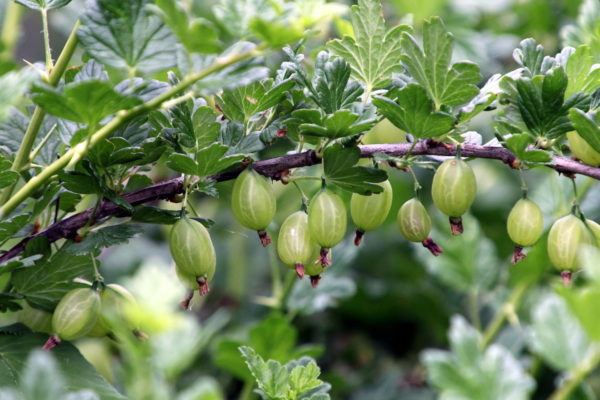
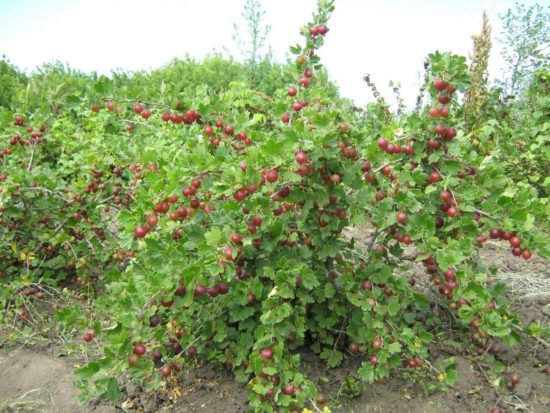
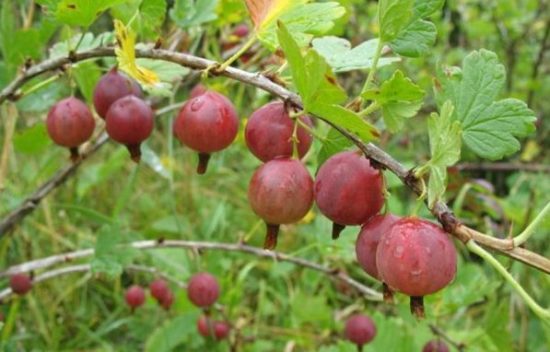

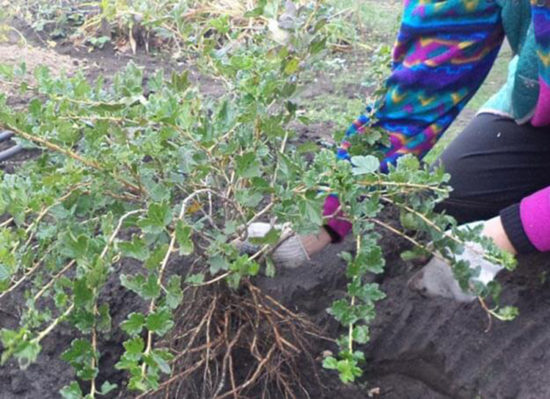
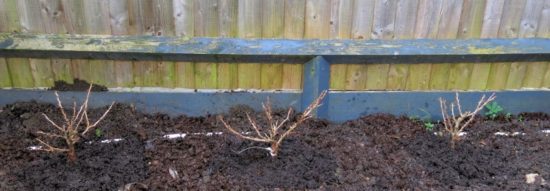
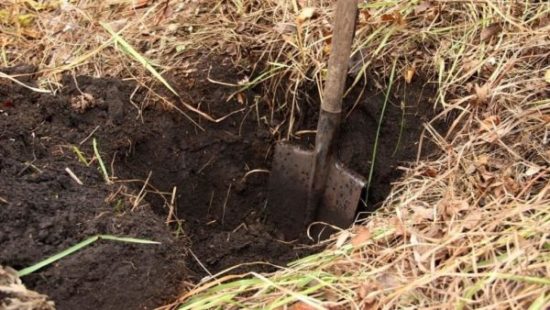
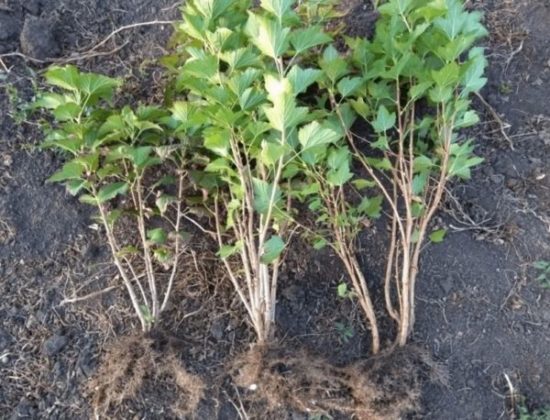
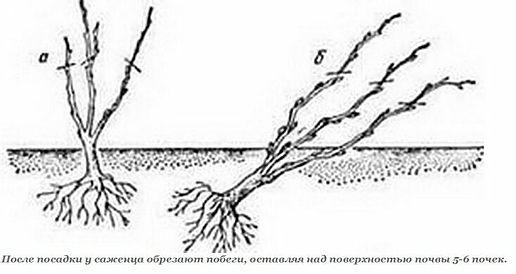
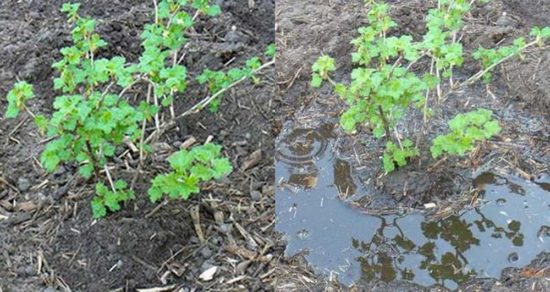
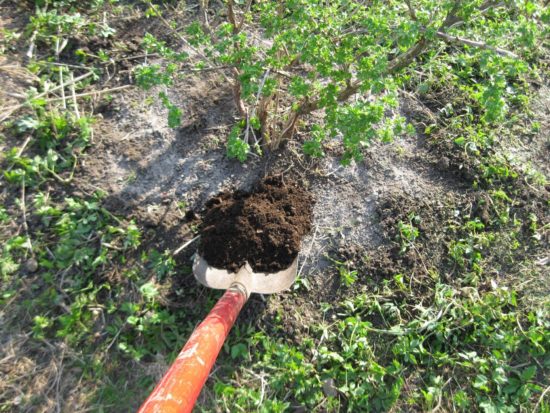
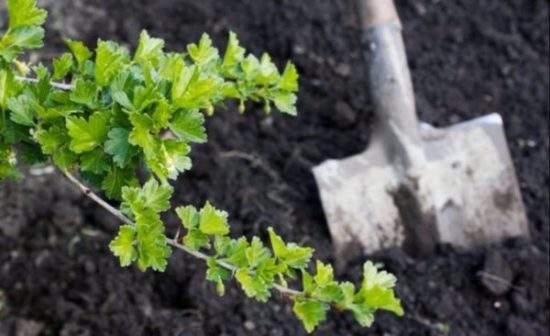
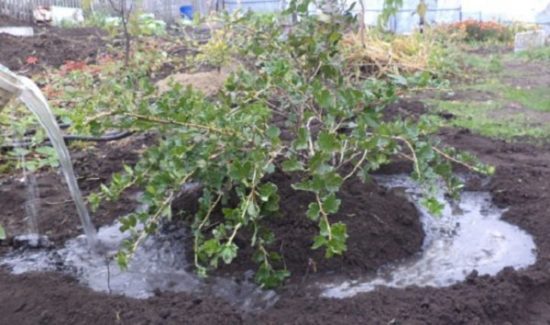
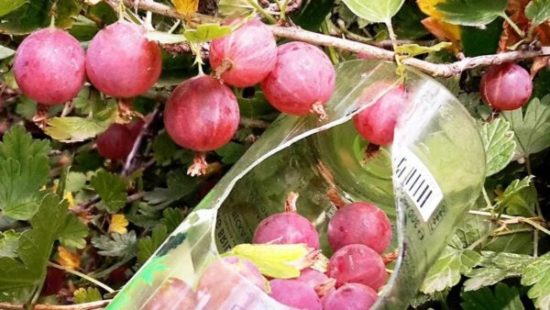

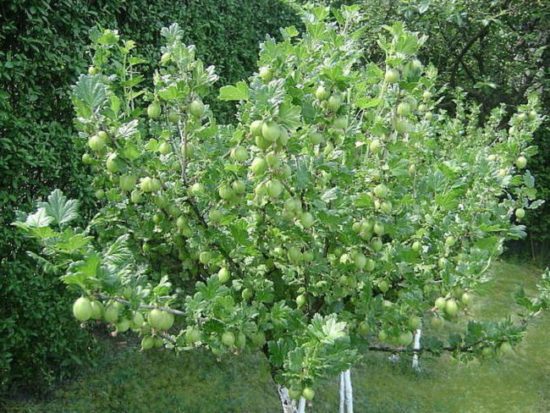
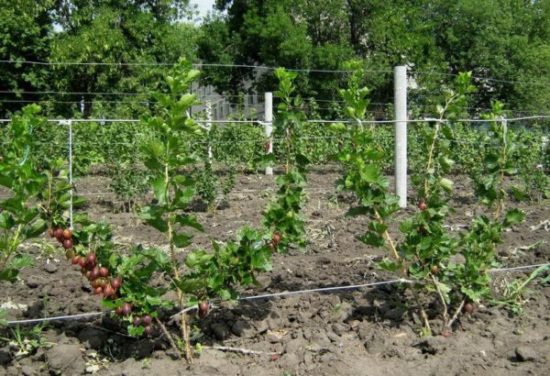
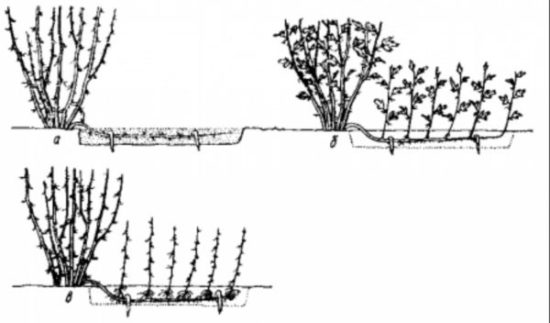
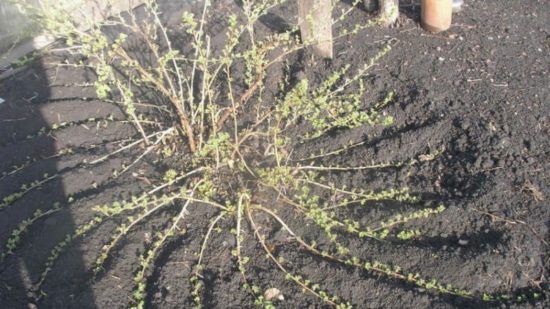
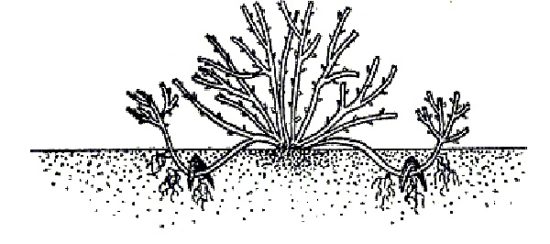
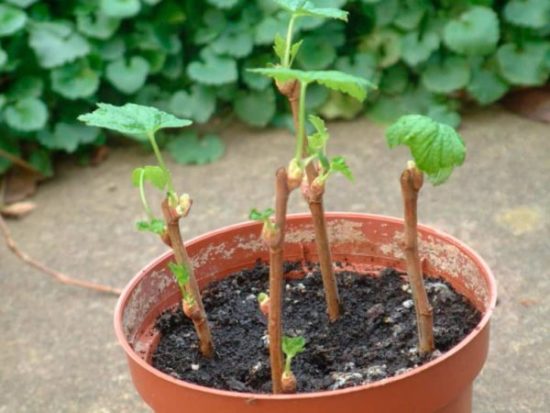

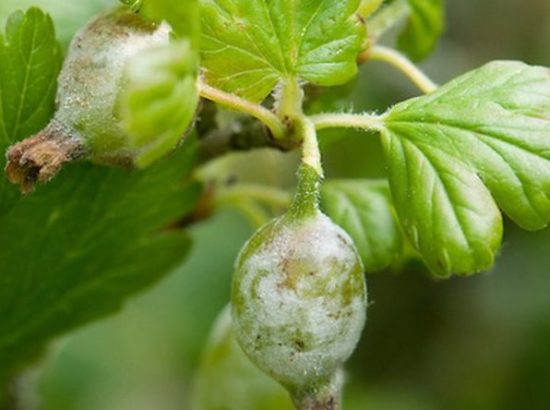
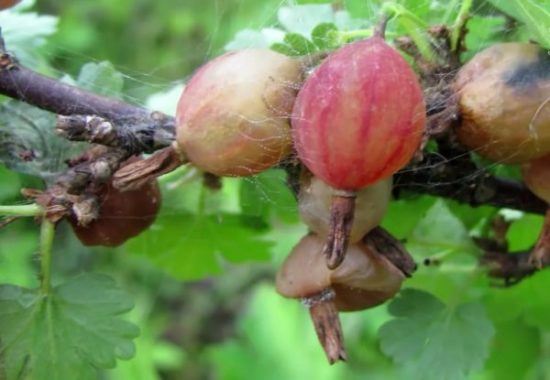

 CUCUMBERS NEVER GET SICK, I'VE BEEN USING ONLY THIS FOR 40 YEARS! I SHARE A SECRET WITH YOU, CUCUMBERS ARE LIKE THE PICTURE!
CUCUMBERS NEVER GET SICK, I'VE BEEN USING ONLY THIS FOR 40 YEARS! I SHARE A SECRET WITH YOU, CUCUMBERS ARE LIKE THE PICTURE! You can dig a bucket of potatoes from each bush. Do you think these are fairy tales? Watch the video
You can dig a bucket of potatoes from each bush. Do you think these are fairy tales? Watch the video
 How our fellow gardeners work in Korea. There is a lot to learn and just fun to watch.
How our fellow gardeners work in Korea. There is a lot to learn and just fun to watch. Eye trainer. The author claims that with daily viewing, vision is restored. They don't charge money for views.
Eye trainer. The author claims that with daily viewing, vision is restored. They don't charge money for views. A 3-ingredient cake recipe in 30 minutes is better than Napoleon. Simple and very tasty.
A 3-ingredient cake recipe in 30 minutes is better than Napoleon. Simple and very tasty. Therapeutic exercises for cervical osteochondrosis. A complete set of exercises.
Therapeutic exercises for cervical osteochondrosis. A complete set of exercises. Which indoor plants match your zodiac sign?
Which indoor plants match your zodiac sign? What about them? Excursion to German dachas.
What about them? Excursion to German dachas.